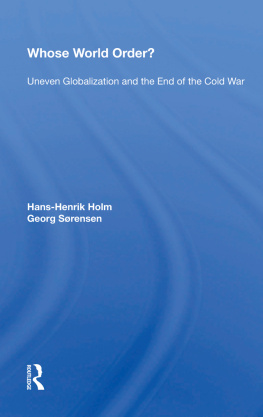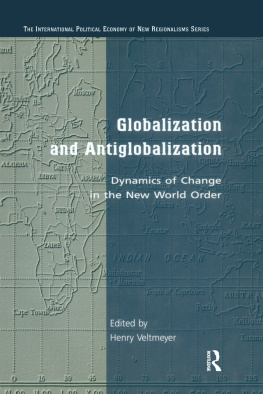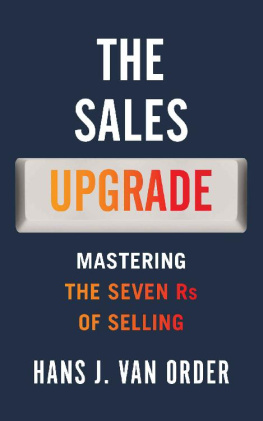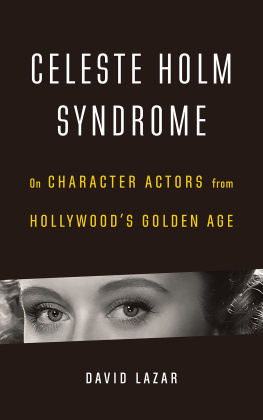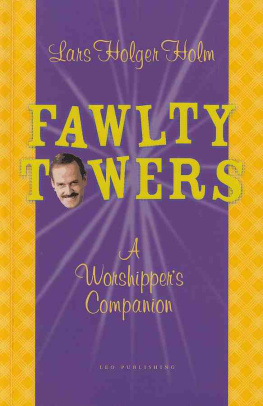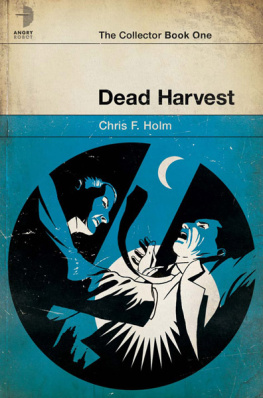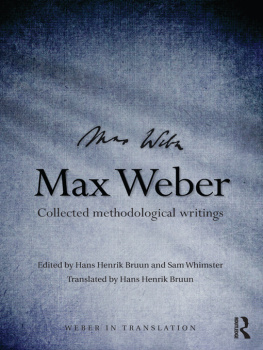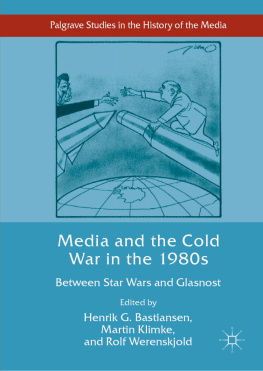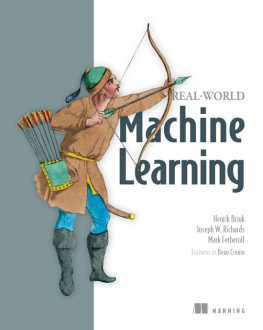Whose World Order?
Whose World Order?
Uneven Globalization and the End of the Cold War
HANS-HENRIK HOLM AND
GEORG SRENSEN
First published 1995 by Westview Press
Published 2018 by Routledge
52 Vanderbilt Avenue, New York, NY 10017
2 Park Square, Milton Park, Abingdon, Oxon OX14 4RN
Routledge is an imprint of the Taylor & Francis Group, an informa business
Copyright 1995 by Taylor & Francis
All rights reserved. No part of this book may be reprinted or reproduced or utilised in any form or by any electronic, mechanical, or other means, now known or hereafter invented, including photocopying and recording, or in any information storage or retrieval system, without permission in writing from the publishers.
Notice:
Product or corporate names may be trademarks or registered trademarks, and are used only for identification and explanation without intent to infringe.
Library of Congress Cataloging-in-Publication Data
Holm, Hans Henrik, 1951
Whose world order?: uneven globalization and the end of the Cold
War / Hans-Henrik Holm and Georg Srensen.
p. cm.
Includes bibliographical references and index.
ISBN 0-8133-2186-7. ISBN 0-8133-2187-5 (pbk.)
1. World politics1989- 2. Equality. I. Srensen, Georg, 1948- .
II. Title.
D860.H65 1995
327'.09'94dc20 94-24014
CIP
ISBN 13: 978-0-367-21377-0(hbk)
The idea for this book took shape in 1992. when we were working on an analysis of the post-Cold War world from the European point of view. One of our colleagues who reviewed our work commented on our Eurocentrism. Reluctantly, we had to agree. Even if there are uniform global trends, the world seen from Europe is different from the world seen from Pacific Asia, from China, from Africa, from South Asia, from Latin America, and from the United States. The second source of inspiration for the book was the confusion and perplexity that sometimes results when international relations (IR) scholars meet to discuss the future of international relations theory.
We decided to ask eight prominent IR scholars from eight different parts of the world to contribute to a book on the new world order. It was important to us that the authors were actually rooted in the country or region on which they were asked to contribute. If there were any potential clashes among different cultures and perceptions, we wanted them to surface. We gave the contributors our original analysis and asked them to address two questions: (1) What has changed, in political, ideological, and economic terms, as seen from your part of the world? Is there a new world order? (2) Reflect briefly on consequences of the changes for theorizing in international relations.
Collective deliberations on these initial contributions provided the framework for the analysis set forth in . The authors then rewrote their contributions in accordance with the common framework. Drawing on the revised contributions, but also on our own ideas, we wrote the final chapter on international relations theory.
Our first thanks, and deep gratitude, go to our fellow authors who took time away from many other urgent tasks to participate in the project. We have had the good fortune of developing new friendships in a context of stimulating and efficient cooperation. Jennifer Knerr and Eric Wright from Westview were highly positive and forthcoming about the project from the very beginning. It was a great advantage to have publication plans settled at a very early stage. We are also grateful to Nancy Graham Holm for providing the book title and generous help. Our secretary in Aarhus, Jonna Kjaer, has handled both manuscript revisions and communications among participants across the globe most efficiently. Diane Hess has done a marvelous job editing the manuscript, and Libby Barstow has guided it safely through the production process.
We are grateful for financial support from the Aarhus University Research Foundation, Danish Institute of International Studies, Danish Social Science Research Council, Danish Commission on Security and Disarmament, and Danish Council for Development Research.
Our own friendship and cooperation go back many years. We use the method for sustained cooperation recommended by Robert Keohane and Joseph Nye: swallowing our pride while we tear apart each other's drafts. We have swallowed and torn in the hope that what's left makes for worthwhile reading.
We would like to dedicate this book to our youngest children, Hannah Marina and Sebastian. We cannot promise them a better world, merely a small contribution to an improved understanding of the world we have.
Hans-Henrik Holm
Georg Srensen
1
Introduction: What Has Changed?
HANS-HENRIK HOLM AND GEORG SRENSEN
What has changed in international relations? Answering this question has become one of the central issues in the international relations (IR) debate. There is no accepted set of overall theoretical paradigms to guide our questions and quest for answers. The usefulness of the realist, liberalist, and Marxist paradigms appears to have decreased significantly. Too many relevant questions appear to fall outside the frameworks suggested by these dominant traditions. If there is a consensus in the present debate, it is this: In a world of variation and differentiation we are left without a firm theoretical compass to guide us.
Starting from this world of variation, our argument is simple: Globalization and the end of the Cold War are the two main expressions of change in the international system. Globalization is, briefly, the intensification of economic, political, social, and cultural relations across borders. The process is uneven in terms of cross-national intensity, geographical scope, and national and local depth. In Ferdinand Braudel's terminology it is a longue dure variable, expressing accumulated social change over time. The second variable is vnementielle , as Braudel would call the end of the Cold War.
Throughout the book, we analyze the combined effects of these two variables when they are simultaneously "filtered through" different types of societal structures and different geographical regions. We distinguish between two types of societal structures: (1) core-type, industrialized countries with consolidated liberal democracies involving a high degree of both internal and external institutionalization; and (2) periphery-type, semi- or nonindustrialized, authoritarian or semidemocratic areas with a relatively low degree of internal and external institutionalization.
In the case of Pacific Asia, the regional perspective employed cuts across the distinction between core-type, industrialized areas with consolidated liberal democracies and periphery-type, semi- or nonindustrialized, authoritarian or semidemocratic areas. The other regions belong either to the core (Western Europe, the United States) or to the periphery-semiperiphery (Africa, Latin America, South Asia) category. Finally, the changes in the former eastern bloc have created a "gray zone" (or semiperipheral area) in which a number of countries clearly resemble periphery-type societies (Azerbaijan, Turkmenia, Uzbekistan, and others). The most advanced countries (Hungary, the Czech and Slovak Republics, Poland, and also Russia) struggle for membership in the core. The notion of different societal structures is especially important for our analysis of the consequences of uneven globalization. In order to study the consequences of globalization, it is necessary to take the diverging societal structures of the affected units into account.


